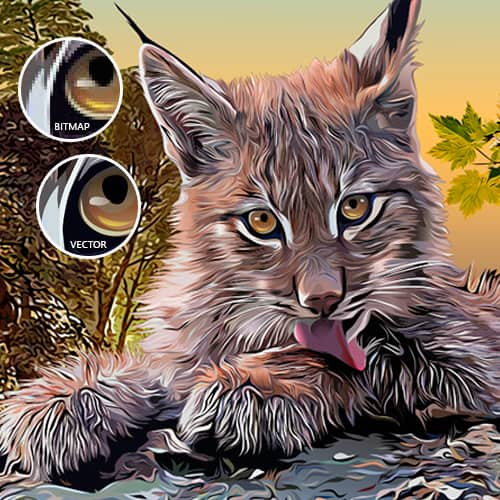
Unlike raster files, you probably won’t be able to open these on your computer, but these files are what your designer and/or printer will request, mainly for print materials. These are the original files used to create your logo. When you work with a graphic designer to create your logo and your brand, you should always request the following: Your logo arsenal should contain both raster and vector graphic formats. Your Logo Arsenal – Raster + Vector Graphics A great logo should have a clean look so that’s it’s instantly recognizable to your target market. Now, this shouldn’t matter too much when it comes to your logo.


However, vector graphics can be slightly limiting when it comes to level of detail. Unlike raster graphics, vector graphics are not resolution dependent, so the image never looks pixelated, regardless of size.įor this reason, your logo should be designed in vector format. This means the same vector image can be scaled down to the size of the head of a pin, or blown up to billboard-size without losing resolution. Vector Graphics: Flexible FormatĪ vector graphic is composed of mathematically drawn lines, points and fills. The term DPI is a measurement of print resolution, as opposed to PPI, which is used to describe screen resolution.Īn image looks “pixelated” when the image is below the required PPI or DPI for optimal resolution. Not to worry – one dot per inch is the same as one pixel per inch. You may have also heard the term DPI, which means dots per inch. Websites are 72 pixels per inch (or PPI), whereas newspapers are around 200 PPI and magazines are at least 300 PPI. The higher the number of pixels per inch, the higher the resolution of the image. Raster graphics are resolution dependent. Together, these tiny squares (or pixels) of color create an image, such as your logo. A pixelated file consists of a number of little grid squares filled with color. Why? Because when it comes to your logo, you should be sure you receive the appropriate formats from your graphic designer so you have the flexibility to use your logo when and where you want to! Raster Graphics: Pixel PerfectĪ pixelated image is called a raster graphic. As a small business owner, it’s important to have a general knowledge of these terms. Vector and raster are two terms you’ve probably heard before, and if you’re not a graphic designer, you might not be 100% clear on the difference between the two. After all, your logo is an instantly recognizable snapshot of your brand and your business!
#VECTOR VS RASTER GRAPHICS PC#
Most PC people use both pairs of terms interchangeably.You always want your logo to look stellar, both in print and online. Most Macintosh people use the terms object-oriented and bitmapped rather than vector and raster.

See paint program for an example illustrating the fixed resolution. In a raster graphic, the actual dots that make up the image you see are defined when the graphic is created, so the resolution is fixed changing the size will make the image look coarse or muddy. The contrasting term is raster graphic (the terms raster and bitmapped are synonymous). The term vector graphics means exactly the same thing as object-oriented (or just object) graphics. Because the dots are not specified unit! you display or print the graphic, you can change the size of the image without any loss of quality, and the image will always appear at the highest resolution of whatever screen or printer you’re using. When you display a vector graphic on the screen or print it, these formulas are converted into the patterns of dots you can see. Vector graphics are stored in the computer as a set of mathematical formulas describing the shapes that make up each image.


 0 kommentar(er)
0 kommentar(er)
